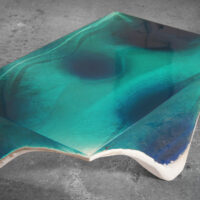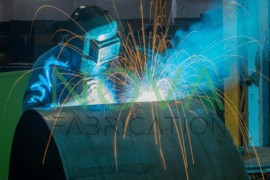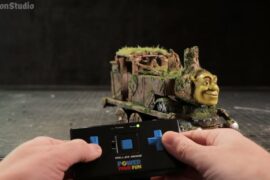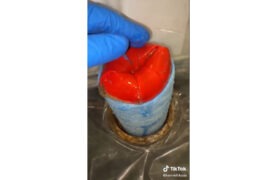Back when my generation were kids, we created projects using the most state-of-the-art technology on the market–Tinkertoys, Erector Sets and the eternally popular LEGO. It took a lot of imagination (along with cuts and bruises) to create projects that somehow always ended up being some crazy Rube Goldberg contraption. Imagine if we had access to the tech that kids have today, such as Weistek’s MiniToy 3D printer, a kid-friendly, 3D printing making machine.
The Shenzhen-based company unveiled their MiniToy 3D printer at this year’s CES expo with the aim of getting kids interested in STEM fields. Though it may not look like it, the MiniToy is a full-fledged 3D printer, however since it’s aimed at kids all the mechanical parts are hidden away behind plastic shrouds. Even the screws were concealed to give it that toy-like appearance. Though a toy, the printer’s specs are impressive, which include a 0.4mm nozzle, a build volume of 170 x 130 x 140mm (6.7″ x 5.12″ x 5.5″) and a print speed of 30 – 300mm/second depending on the resolution. Since the printer was designed as a learning tool, the interface has been simplified for kids, where all they have to do is tap object content, select what they want and hit print.
And since the MiniToy is primarily a learning tool, I reached out to Weistek to ask a few questions, such as how it might be used for education. “The MiniToy is meant to provide more comprehensive learning inside and outside of schools by introducing 3D printing as an avenue. The thought behind the MiniToy is to inspire kids to question and innovate objects, ideas, and concepts that we frequently encounter.” They went on to state that, “imparting technical knowledge about 3D printing is not the biggest goal here, but to get kids to realize what they can achieve through 3D printing.
Even though it looks like a toy, the MiniToy is a full-fledged 3D printer.”
Of course, I had to know what went into the design process of making a kid-friendly printer and their reply didn’t disappoint. “We spent a year developing the MiniToy with a team of 15 engineers. The biggest challenge was in making a fully functioning 3D printer that entices kids to use it with as much as possible. We had to substitute many metal parts found in traditional 3D printers with plastic ones to make it light enough for children to carry.”
We already know all the ‘it may hurt them’ parts are hidden away from prying little hands, but how did they come to the final design and what were the challenges to making it kid friendly? “Throughout the development, we went through five prototypes. We had initial problems with the printing stability. We went through several trial and errors to find the right balance between the power and mechanism used, while hiding most of the mechanical parts.”
And the challenges? “The wide angle (330 degrees) view also provided a bit of a challenge in terms of what parts were being shown. These issues combined presented quite a challenge in the printing stability, but we were able to make a few key changes that significantly improved the performance, without adding any pillars or additional metal around the casing.” Finally, they added that, “the best part of the process was finally being able to see kids’ enthusiasm grow as more things were being printed with MiniToy. The feeling of empowerment that overcame them was apparent and contagious, and we can’t wait for more people to see why.”
Weistek has a Kickstarter campaign to crowd-fund their MiniToy 3D printer and has already surpassed their goal of $50,000 with over a month left to go in their campaign. Those who want to get their hands on one can pledge $299 or more, which nets you the printer and several different spools of PLA filament.











